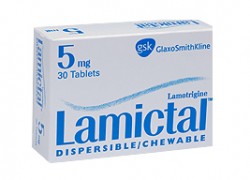Top Class Actions’s website and social media posts use affiliate links. If you make a purchase using such links, we may receive a commission, but it will not result in any additional charges to you. Please review our Affiliate Link Disclosure for more information.

Even though most Lamictal-induced rashes are not severe, some studies have linked Lamictal with a rare skin rash known as Stevens Johnson Syndrome (SJS).
Lamictal SJS Warnings
Lamictal was first approved by the FDA in 1994 for the treatment of epilepsy and bipolar disorder. The FDA added a black box warning for Lamictal in 1997, regarding the serious, life-threatening and sometimes fatal rashes reported in both adult and pediatric patients.
Additionally, GlaxoSmithKline, the Lamictal drug maker, has a “new warnings” alert on the their website for the drug, which leads to information about the potential risk of Stevens Johnson Syndrome from Lamictal.
The warning indicates that SJS symptoms are most likely to happen within the first two to eight weeks of Lamictal treatment. It also warns that children ages two to 16 are the most likely victims of Lamictal SJS.
Even though the medication has only been available since 1994, Lamictal has been linked to more cases of SJS than any other drug on the market from 1968 through 2009. One study suggests that taking Lamictal increases the risk of SJS by a factor of 14.
What is Stevens Johnson Syndrome?
Stevens Johnson Syndrome (SJS) is a condition that results in severe skin reactions, including rashes and blisters that can progress to third degree burn-like intensity. SJS has many causes, though adverse drug reactions are often reported in conjunction with the condition.
SJS was once thought to be rare, but that be due to a general lack of awareness. SJS occurs almost twice as often in males as females and more often in the young than in seniors, though rarely in infants.
What Causes Stevens Johnson Syndrome?
Stevens Johnson Syndrome is known to occur as a side effect of several medications, including Lamictal. It is highly debilitating and causes the skin to burn from the inside out, producing blisters, severe rashes, and potentially causing the skin to separate from the body.
When the skin lesions affect more than 30 percent of the body, the condition is referred to as Toxic Epidermal Necrolysis (TEN). Treatment in a hospital Intensive Care Unit (ICU) or Burn Unit is often required, and the condition can be fatal in many cases.
Patients taking Lamictal should be aware of SJS symptoms including:
- Red or purplish rash that spreads
- Painful skin
- Painful blisters of the mucous membranes
- Blisters on the eyes, nose, mouth, and genitals
- Sloughing off of skin in patches
- Joint and muscle pains
- Burning sensation all over your body
Lamictal SJS Lawsuits
SJS cases can be extremely complex, often resulting in large medical bills for extensive treatment and long-term side effects that can be permanently disabling. Studies have suggested that there is a strong link between Lamictal use and Stevens Johnson Syndrome.
People who are filing Lamictal Stevens Johnson Syndrome lawsuits against GSK claim that the drug manufacturer was aware of the SJS side effects associated with Lamictal but fraudulently concealed this information from the medical community and consumers.
Do YOU have a legal claim? Fill out the form on this page now for a free, immediate, and confidential case evaluation. The Stevens Johnson Syndrome attorneys who work with Top Class Actions will contact you if you qualify to let you know if an individual lawsuit or class action lawsuit is best for you. [In general, SJS lawsuits are filed individually by each plaintiff and are not class actions.] Hurry — statutes of limitations may apply.
ATTORNEY ADVERTISING
Top Class Actions is a Proud Member of the American Bar Association
LEGAL INFORMATION IS NOT LEGAL ADVICE
Top Class Actions Legal Statement
©2008 – 2024 Top Class Actions® LLC
Various Trademarks held by their respective owners
This website is not intended for viewing or usage by European Union citizens.
Get Help – It’s Free
Help for Victims of Stevens Johnson Syndrome
If you or a loved one were diagnosed with Stevens Johnson Syndrome (SJS) or toxic epidermal necrolysis (TEN) after taking a prescribed or over-the-counter medication, you may be eligible to take legal action against the drug’s manufacturer. Filing an SJS lawsuit or class action lawsuit may help you obtain compensation for medical bills, pain and suffering, and other damages. Obtain a free and confidential review of your case by filling out the form below.
An attorney will contact you if you qualify to discuss the details of your potential case at no charge to you.
Oops! We could not locate your form.












